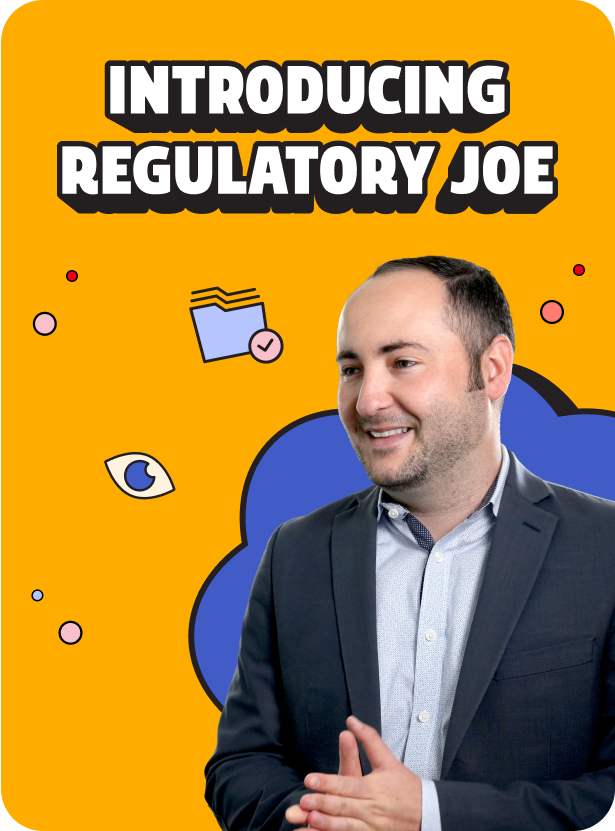Third-party administrator (TPA) licensure may look straightforward on paper, but in practice it can make or break a business. Between financial documentation, surety bonds and rapid-fire renewals, the process is full of pressure points that can catch TPAs off guard.
In this episode of Regulatory Joe, ClearFile President Joe Boyle unpacks the essentials of TPA licensure and what every administrator should be preparing for.
Third-Party Administrator Licensure Checklist: Core Requirements
Most states ask for the same core building blocks for TPA licensure:
- 1-2 years of financial statements (sometimes audited)
- Articles of incorporation
- Officer affidavits
- Proof of a surety bond or errors and omissions (E&O) coverage.
On the surface, these items seem simple to provide, but the real details vary widely. For example, bond amounts can jump into six figures depending on your membership footprint and financial requirements shift by state.
It’s critical for issuers to treat these requirements as more than a checklist. They’re a stress test for whether your TPA is prepared to operate responsibly at scale.
How Long Does TPA Licensure Take? (And Why Renewals Are Tougher)
A new TPA licensure might move quicky (in as little as a week) or drag into a three-month process, depending on the state. But the bigger challenge often comes after approval. Many states cluster renewals between January and March, which means a license granted in November could be up for renewal immediately.
The strongest strategy is to plan for renewals from day one. Align staffing, build out a comprehensive calendar and resource your team so the first quarter doesn’t become a scramble.
Who Needs a TPA License—and Who Might Be Exempt
Some TPAs working primarily with self-funded ERISA plans may qualify for exemptions or abridged filings. That can sound like a shortcut, but exemptions are narrowly defined and interpreted differently across regulators. Skipping a filing without verification can create bigger compliance problems down the road.
The smarter move is to confirm with regulators up front. A short call can save months of corrective work.
Regulatory Joe Recommendations for TPA Licensure Success
- Centralize your filings. Don’t scatter documents across inboxes and spreadsheets. A single system of record, like ClearFile, prevents missed steps and makes renewals smoother.
- Align licensure with market strategy. File only where your payer contracts and growth plans demand it. Unnecessary licenses waste resources and add burden to renewal season.
- Budget for bonding early. Surety and E&O requirements scale with your membership footprint. Factor high bond amounts into financial planning before you apply.
- Plan for the Q1 crunch. Many renewals fall between January and March. Staff up and schedule accordingly so year-end licenses don’t blindside your team.
- Don’t assume exemptions apply. ERISA self-funded work sometimes qualifies for exemptions, but interpretations vary. Confirm with your regulators directly to avoid compliance surprises.
- Build Year 2 reporting pipelines now. Licensure goes beyond initial approval. Set up data collection processes with claims and finance so your first renewal isn’t a fire drill.
- Establish a regulatory contact strategy. Regular, proactive communication with state insurance departments can speed approvals and smooth objections before they escalate.
Episode Transcript
Hey everybody. Welcome to Regulatory Joe. I’m Joe Boyle, president of ClearFile, and today I’m pleased to introduce our latest topic, TPA Licensure 101.
Starting with the basics, what is TPA? TPA is short for third-party administrator. Generally speaking, it’s an intermediary between a health plan and a member. One of the primary purposes of a TPA is to facilitate transactions and claims between a member getting healthcare services and the payer or insurer that processes and adjudicates those claims.
So, how does a TPA become licensed? Once a TPA identifies an opportunity to work with a payer or insurer, that TPA needs to reach out to the respective division of insurance and obtain the application requirements for not just new licensure, but renewal licensure and any reporting requirements for that state.
There are a few ways you can do this. You can go directly to a Division of Insurance website, searching through Google, Bing, or another search engine, and navigate the webpages using different keywords. If you have existing relationships with the payer, they may be able to introduce you to the regulators to help you better understand those requirements as part of your engagement upfront.
Once you establish your primary distribution channel—whether through your payer, directly to regulators, or directly to a Division of Insurance site—we recommend dedicating a resource or central point of contact within your TPA to facilitate the application information to the right legal or compliance folks in your organization.
Licensure does not happen overnight, and it comes with a cost. We recommend building a timeline and project plan to disseminate all the application requirements. Generally, a TPA application requires core, fundamental things. You need up to one to two years of financial statements. Some states require audited statements, some do not. Be prepared to obtain audited financial statements if you don’t have them already or current within 30–60 days of the effective date of your engagement. States and audit firms charge significant fees to prepare these materials, so build in extra weeks to avoid overcommitting to a new payer partner and under-delivering service to members.
Step one: have a modest timeline. It’s easy to be overzealous. Make sure you have the staff in place to resource the work.
Step two: beyond financials, have a good understanding of your articles of organization—where you’re incorporated, where you’re domiciled, who your senior officers are, and likely biographical affidavits.
Lastly, with any licensure comes risk. States often require some type of surety bond or E&O coverage (errors and omissions) to protect members and payer partners from risk. Depending on your book of business size and membership, surety bonds can be cost favorable or as high as $50k–$100k per year. In states like New York, Florida, or Texas, it could be up to a million-dollar surety bond just to operate.
This is important to understand upfront. If you’re eager to partner with insurers, know their footprint—how many members they serve and where. Otherwise, you may waste time pursuing business in states where you can’t afford to operate. Develop a product roadmap and implementation plan. If you need to reprioritize your state roadmap, that’s okay. Some states are more affordable than others.
Once licensed, we’ve seen new licensure take as little as one week or as long as three months. Some states review first-come, first-served. Work with regulators, and don’t let the new licensure timeline prevent you from planning for renewals.
New licensure can occur any time of year, but renewals are generally between January and March. For example, if your TPA becomes licensed in November or December, you’ll likely need to immediately complete a renewal application in January or February. That can leave little time to build streamlined processes. Be mindful of deadlines for new licensure as they relate to renewals.
Two common complexities for TPAs are: (1) state-by-state variation and (2) missed exemptions for self-funded ERISA requirements.
With state variations, mandates are subject to interpretation. What’s required may differ for a large TPA vs. a small TPA. Regulators often ask questions to understand your business better and ensure you’re a good financial steward. Be prepared to respond on time and clearly.
For exemptions, some TPAs serving self-funded businesses may qualify to skip or abridge applications if they process under 100 lives or fall under revenue thresholds. Fully insured TPAs, however, almost never qualify. Research your state requirements and call regulators if information isn’t clear.
Now, let’s talk about building centralized processes. The top three things to focus on are:
- Understanding your footprint and payer strategy.
- Mapping your services and organizational capabilities.
- Building a centralized implementation plan and business process.
Payers’ strategies can change, so align licensure applications with their growth plans. Establish short, medium, and long-term strategies. Map services to markets like individual, small group, or alternative offerings, and have payer conversations upfront to avoid last-minute delegations.
Finally, build a centralized plan. Many TPAs use Excel, OneNote, Word, sticky notes, or homegrown tools. We recommend forming a workgroup with project management, compliance, legal, and finance representatives to oversee applications. After completing renewals, establish reporting requirements, tap into analytics teams, and build a core business process.
After your first renewal, conduct a lessons-learned session: what went well, what caused delays, what regulators questioned, and why. Licensure is the backbone of TPA operations and should be embedded into long-term strategy.
Don’t just wait for regulators—introduce yourself and establish relationships. A courtesy call helps open communication and speeds approvals.
At the end of the day, licensure mitigates risk. Every TPA should prioritize it, dedicate resources, and support the work.
Thanks for tuning in. Give us a like, give us a share, and we’ll see you next time.









